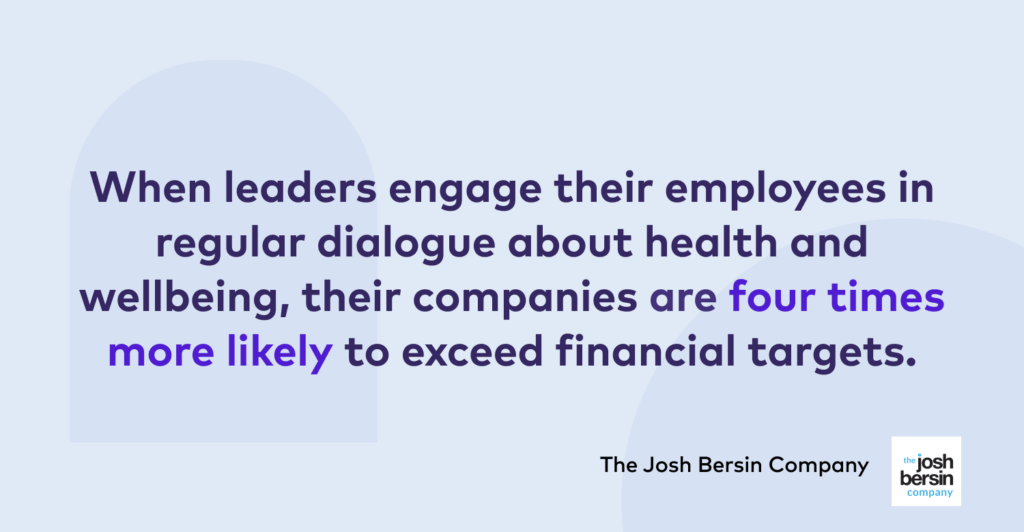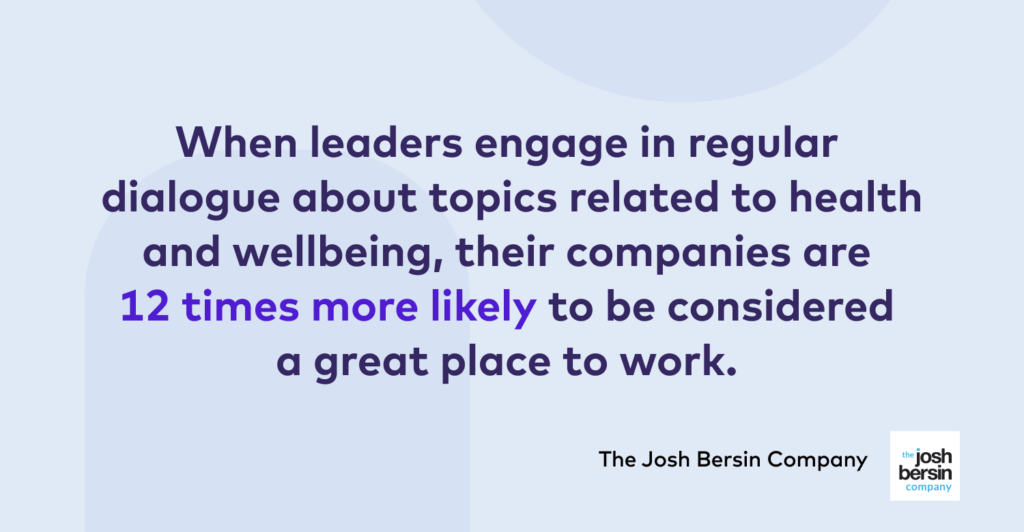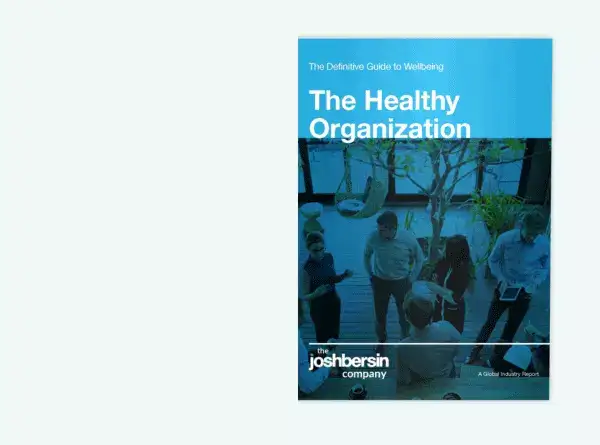How do you diagnose the health of your organization? And, how do you know what to do to improve its health? “The Definitive Guide to Wellbeing: The Healthy Organization,” a new report from The Josh Bersin Company offers a maturity model for healthy organizations. Knowing your company’s stage of maturity gives you a framework for determining the next steps toward becoming a healthier place for your employees to work, grow and contribute to the financial wellbeing of your company.
According to the Bersin report, healthy organizations, “recognize the importance of having senior leaders who are aligned on a clear vision of wellbeing; model and foster healthy behaviors consistently; and recognize the value of a holistic framework.” If that sounds like a tall order, consider this finding from the report: when leaders engage their employees in regular dialogue about health and wellbeing, their companies are four times more likely to exceed financial targets.

The good news is that you can begin the journey toward better organizational health with these two key actions: enlisting leadership support and implementing the right tools and technologies.
Without leadership support and advocacy, wellbeing initiatives won’t be taken seriously by employees. And, without easy-to-use tools and technologies, the ability to deliver a positive health benefits experience will be limited. Not only that, employers will miss out on capturing data that can help them improve the benefits experience over time. A best-in-class benefits experience ultimately rolls up into a positive overall employee experience that retains talent—a key consideration in a tight job market.

So, let’s take a look at key actions companies can take to progress through the stages of becoming a healthy organization.
Level one to level two: from employee safety to employee wellbeing
Companies at this stage move from a focus on safety and basic benefits to an expansive view of wellbeing that might include social, mental and financial health.
Senior leadership will need to participate and advocate for any new wellbeing offerings implemented at this stage. Currently, only 35% of organizations have leaders who actively participate in wellbeing activities with their employees, according to the Bersin report. However, those who do are more likely to innovate effectively and have lower levels of absenteeism.
Because companies usually expand and upgrade their benefit offerings at this stage, it’s important that they be easy to access, understand, pay for and use. Implementing a system like League’s CX platform is one way to ensure that your new tools are accessible and personalized. This allows every employee to get the help they need when they need it.
Level two to level three: from employee wellbeing to healthy work
Making work healthy means helping employees manage their workloads and streamlining work processes so that it’s easier to get work done. Equity is also important at this stage, as it ensures work gets assigned and rewarded in an unbiased way.
Getting to level three requires that leaders do their best to ensure manageable workloads. The Bersin report found that ensuring manageable workloads makes an organization three times more likely to be considered a great place to work. Leaders must also model healthy habits and practices themselves. In fact, those that do have a higher likelihood of being more innovative and retaining employees longer, according to the Bersin research.
Implementing well-designed tools that leaders enjoy using will give them the motivation to share their experiences. Additionally, organizations should look to invest in tools that promote accessibility and mitigate bias. League is one such tool, with artificial intelligence (AI) models designed for inclusivity, including machine learning practices that are trained on diverse population data, allowing the delivery of truly personalized offerings.
Level three to level four: from healthy work to healthy organization
At a truly healthy organization, wellbeing is part of the culture. Wellbeing is no longer just about benefits offerings—it’s integrated into how the company operates. For example, the Bersin report shares a case study of how Unilever Canada became a healthy organization:
We see wellbeing rooted in leadership behaviors, attitudes and cultural norms. We’re no longer saying it’s the employee’s sole responsibility to take care of their wellbeing. We as an employer have a key role to play as a determinant of health.
BRONWYN OTT
Unilever Wellbeing Leader for North America
Leaders support their organizations in becoming level four organizations when they make wellbeing a strategic imperative and engage in regular dialogue on health-related topics. Bersin’s research shows a very strong correlation between leadership engagement and wellbeing:

The tools and technology that support level four organizations have a strong analytics component that enables them to identify employee health concerns and provide additional support when needed. The rich health and wellbeing data gathered from tools like League’s CX platform become integrated with other organizational metrics, providing companies with a complete picture of their employee population that includes wellbeing, performance and development.
Upleveling your company’s approach to wellbeing
Becoming a healthy organization doesn’t happen overnight—it happens through many actions taken over time. Whatever stage your company is in, you can take the next step to lead you up the healthy organization maturity ladder.

